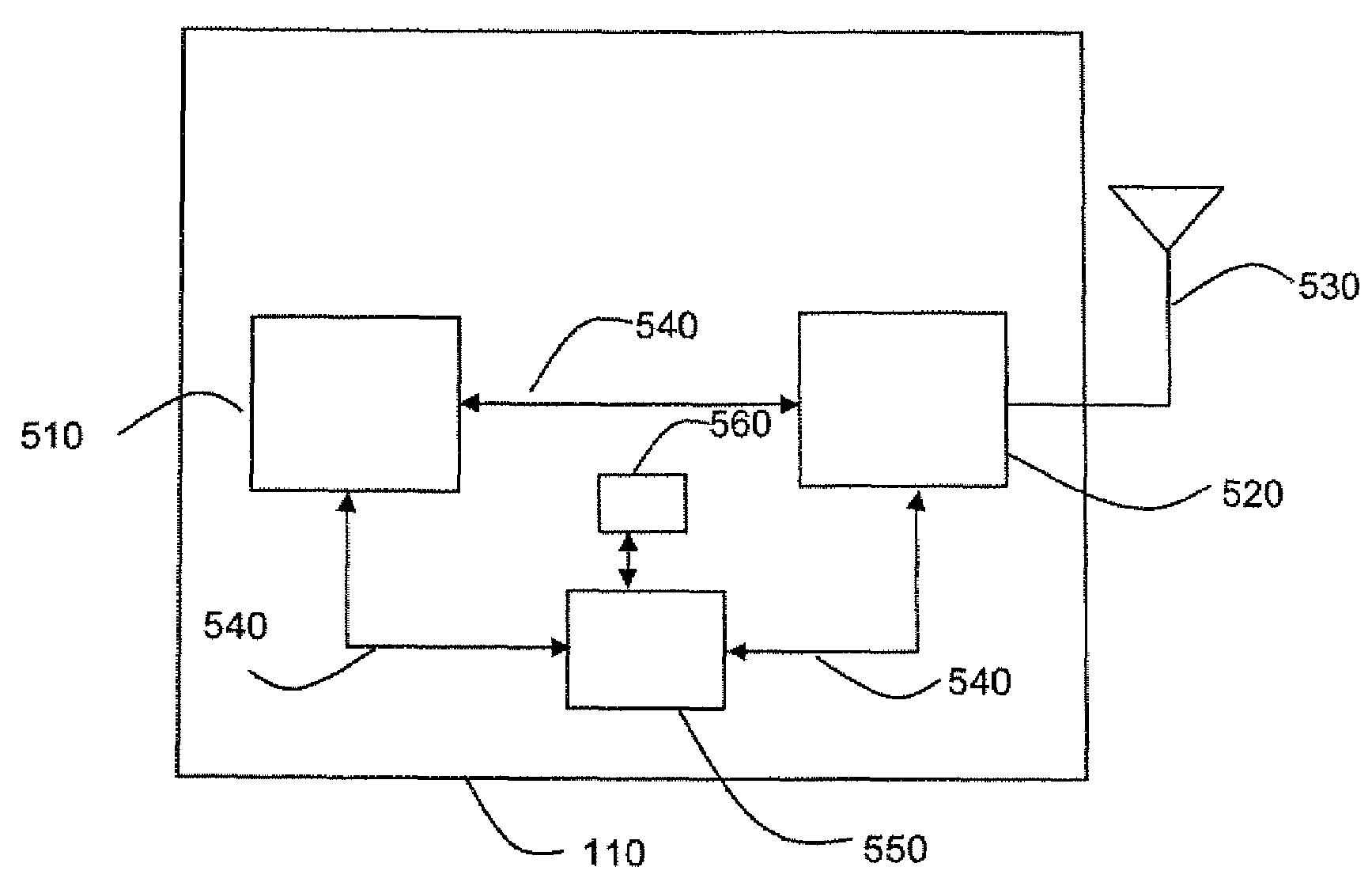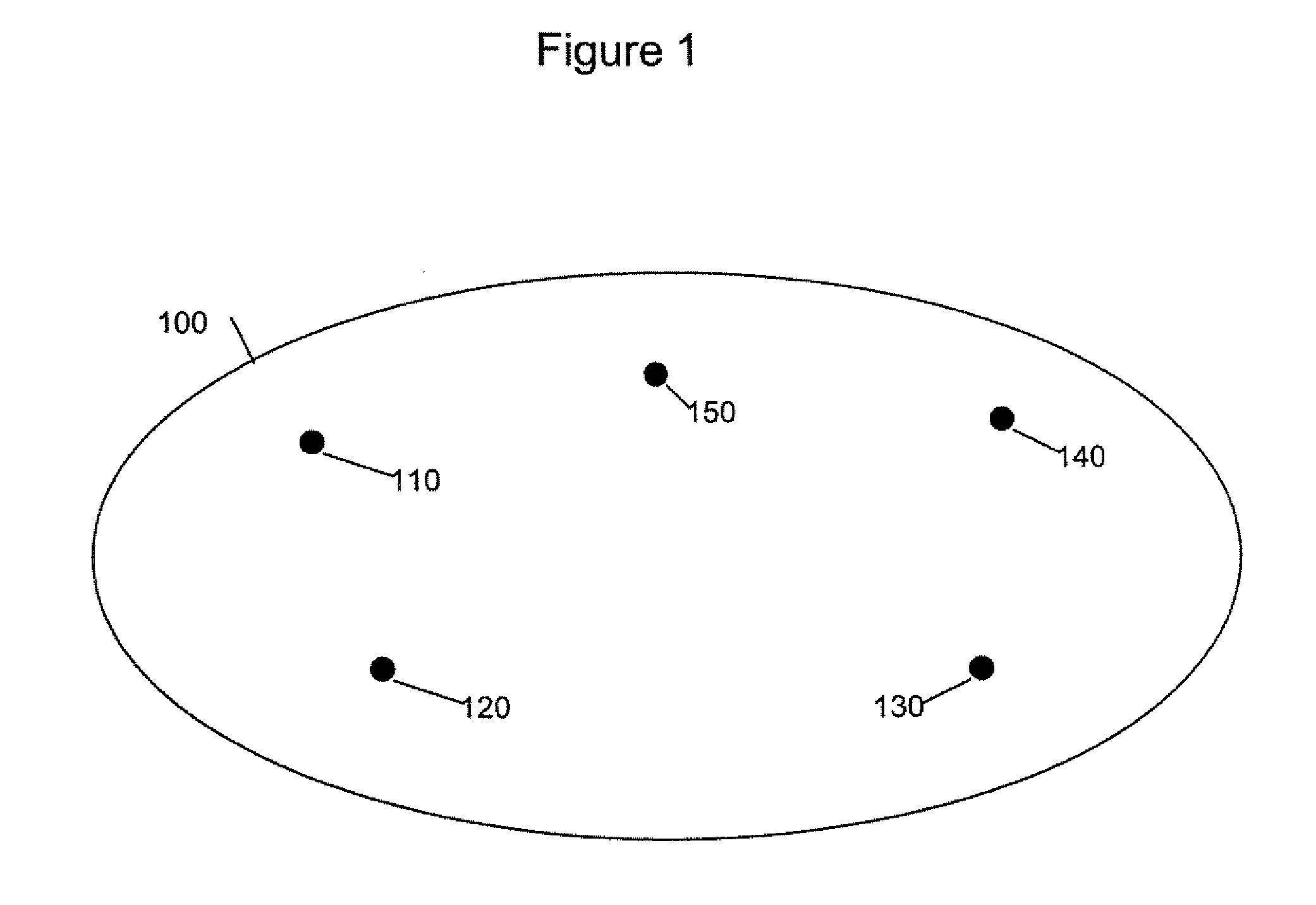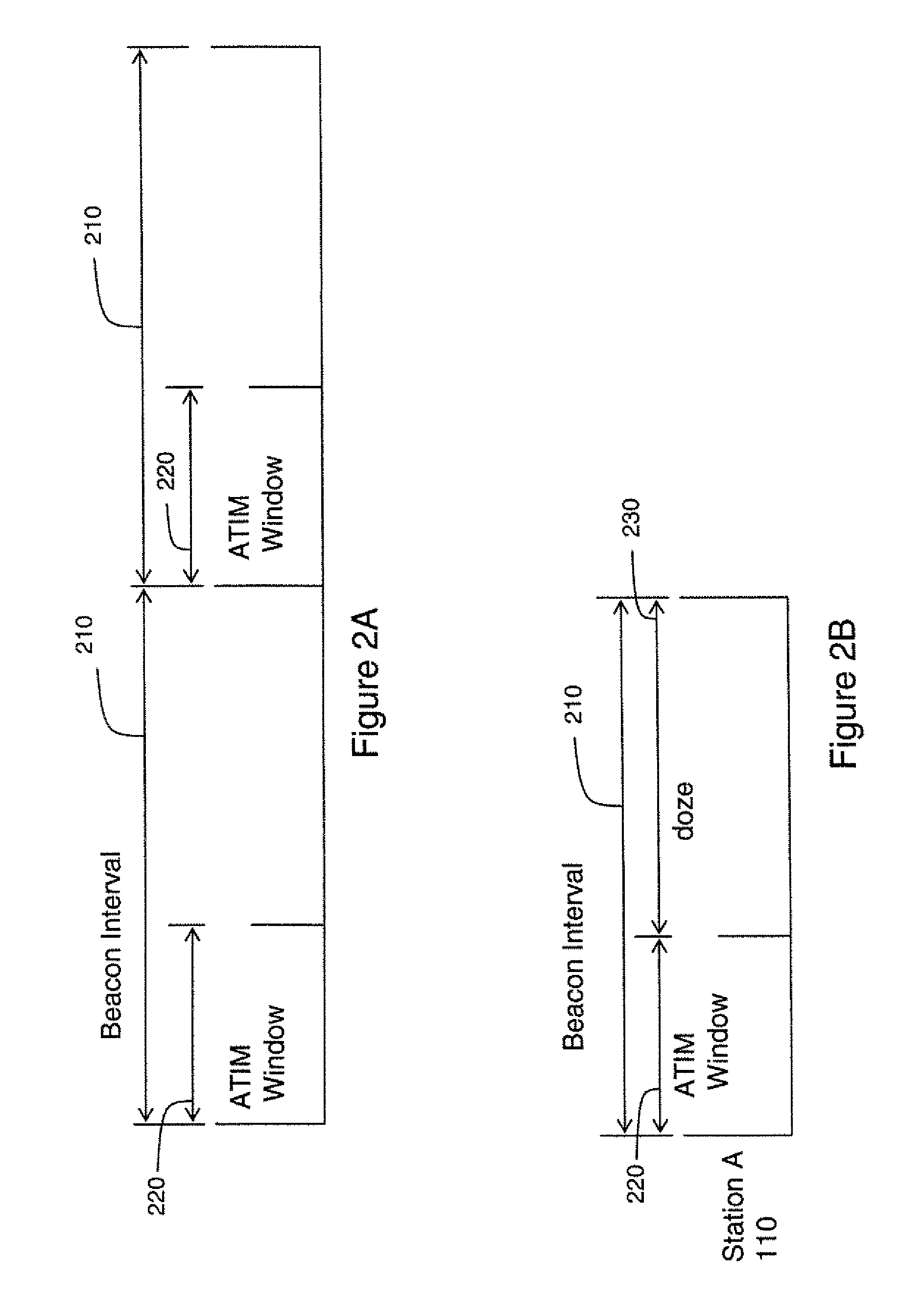Enhanced IEEE Power Save in Ad Hoc Wireless Mode
a wireless mode and wireless network technology, applied in power management, high-level techniques, sustainable buildings, etc., can solve the problems of unnecessarily awake station, unfavorable power consumption, and inability to sleep station according to ieee 802.11 standard
- Summary
- Abstract
- Description
- Claims
- Application Information
AI Technical Summary
Problems solved by technology
Method used
Image
Examples
Embodiment Construction
[0027]Reference will now be made in detail to the present embodiments of the invention, examples of which are illustrated in the accompanying drawings. Wherever possible, the same reference numbers will be used throughout the drawings to refer to the same or like parts.
[0028]FIG. 1 is a diagram of an exemplary prior art ad hoc wireless network 100 showing five stations: a station A 110, a station B 120, a station C 130, a station D 140, and a station E 150. In an ad hoc wireless network compliant with IEEE 802.11, each station generates a beacon that is used to synchronize communications between the stations. The station that initiates the IBSS establishes the beacon interval that facilitates synchronization. Stations in an IEEE 802.11-compliant network transmit signals at the defined beacon interval for the network in order to be in synchronization with the other stations in the network. ATIM are used to indicate when one station has data for another station in the ad hoc wireless ...
PUM
 Login to View More
Login to View More Abstract
Description
Claims
Application Information
 Login to View More
Login to View More - R&D
- Intellectual Property
- Life Sciences
- Materials
- Tech Scout
- Unparalleled Data Quality
- Higher Quality Content
- 60% Fewer Hallucinations
Browse by: Latest US Patents, China's latest patents, Technical Efficacy Thesaurus, Application Domain, Technology Topic, Popular Technical Reports.
© 2025 PatSnap. All rights reserved.Legal|Privacy policy|Modern Slavery Act Transparency Statement|Sitemap|About US| Contact US: help@patsnap.com



